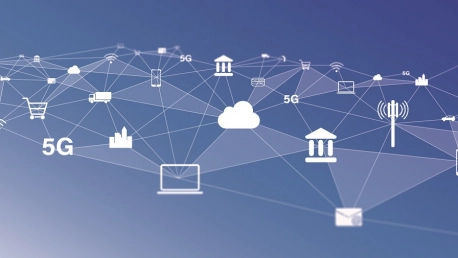Over the last 15-20 years, mobile technology has had an incredible impact on society and businesses, beyond what anyone could have imagined. The fifth generation of mobile networking technology (5G) is now the star of the show, and the buzz has trickled into every other market. Businesses are searching for ways to benefit from the new connectivity options. Here are some of the most important 5G trends to watch in 2022.
5G is on track to becoming the dominant mobile access technology
According to the ten-year edition of the Ericsson Mobility Report, there has been an almost 300-fold increase in mobile data traffic since 2011. The November 2021 edition of the report looks at some of the key trends and events that have shaped the last decade and reveals new estimates for the future, up to 2027.
The assumption that 5G will become the fastest generation of mobile technology deployed to date is complemented by an updated estimate that there will be nearly 660 million 5G subscriptions by the end of this year. The increase is due to a higher-than-expected demand in China and North America, partially driven by falling prices for 5G devices. At the same time, in Q3 2021, the number of 5G subscriptions globally increased by 98 million (compared to 48 million new 4G subscriptions). Thus, it is estimated that over 2 billion people will have 5G coverage by the end of this year.
According to the latest estimates, by 2027, 5G could become the leading technology for accessing mobile services via subscription globally. Also by 2027, approximately 50% of all mobile subscriptions worldwide are expected to be for 5G services. This covers 75% of the world’s population and facilitates 62% of global smartphone data traffic. This report shows an earlier life cycle for the technology used by 5G devices, with 5G phones now accounting for 23% of global volumes, compared to 8% for 4G phones at the time.
5G, voted among the most important technologies in 2022
5G, Cloud Computing, Artificial Intelligence, and Machine Learning will be the most important technologies next year, according to an IEEE global study titled “The Impact of Technology in 2022 and Beyond”. Technology leaders from the US, UK, China, India, and Brazil, including 350 chief technology officers, chief information officers, and IT directors were questioned during the study.
In 2021, technology leaders accelerated the adoption of cloud computing (60%), AI and ML (51%), and 5G (46%), among others. Not surprisingly, 95% agreed, including 66% who strongly agreed, that AI will drive the majority of innovation across every industry sector in the next one to five years.
According to interviewees, in 2022, 5G will benefit areas like telemedicine, remote surgery and health record transmissions (24%), remote learning and education (20%), personal and professional day-to-day communications (15%). Furthermore 5G will benefit entertainment, sports, and live events streaming (14%), manufacturing and assembly (13%), transportation and traffic control (7%), carbon footprint reduction and energy efficiency (5%), and farming and agriculture (2%).
5G driving mobile and fixed markets convergence
A Mobile Experts report that explores the state of Fixed Mobile Convergence (FMC) in the U.S. Telecommunications market through 2024 has found that the FMC evolution continues deeper within the 5G core network on a path of steady growth.
“Large tier-1 operators have long been exploring ways to interwork fixed and mobile networks for seamless voice, data, and video services. As mobile transitions to 5G, those tier-1 operators are driving the FMC architecture framework deeper into the network with 5G Core as the “anchor” and as fixed and mobile access networks get disaggregated and virtualized,” commented Principal Analyst Kyung Mun.
Reduced 5G handset shipments and a spike in 5G SA investment
5G connection numbers will be limited by consumer upgrades to 5G handsets rather than just 5G network deployments. In 2022, chipset shortages will worsen this limitation, according to Analysys Mason‘s research on telecoms, media, and technology predictions for 2022 shows.
According to the research, operators will continue to push for more 5G coverage and more networks will be launched. But subscriber numbers will be determined by the pace of consumers acquiring 5G compatible devices. Reduced 5G handset shipments, in the second half of 2021 and the first half of 2022, will result in 105 million fewer 5G handsets in use in 2022 than the previously forecast.
Analysys Mason predicts that 2022 will be the start of a 2-year spike in 5G SA investment. Between 2020 and 2027, a cumulative USD 990 billion in Capex will be allocated to 5G-related investments—including the radio access network (RAN), core, cloud, and transport—and will make up 65% of total Capex for mobile operators during the same period.
Like in 2021, 5G technology is expected to drive most of the anticipation and activity in the telecom industry next year. Although the global chipset shortages may create some disruptions to handsets delivery, 5G deployment in 2022 will accelerate and consolidate its role as the star of the telecom industry.









